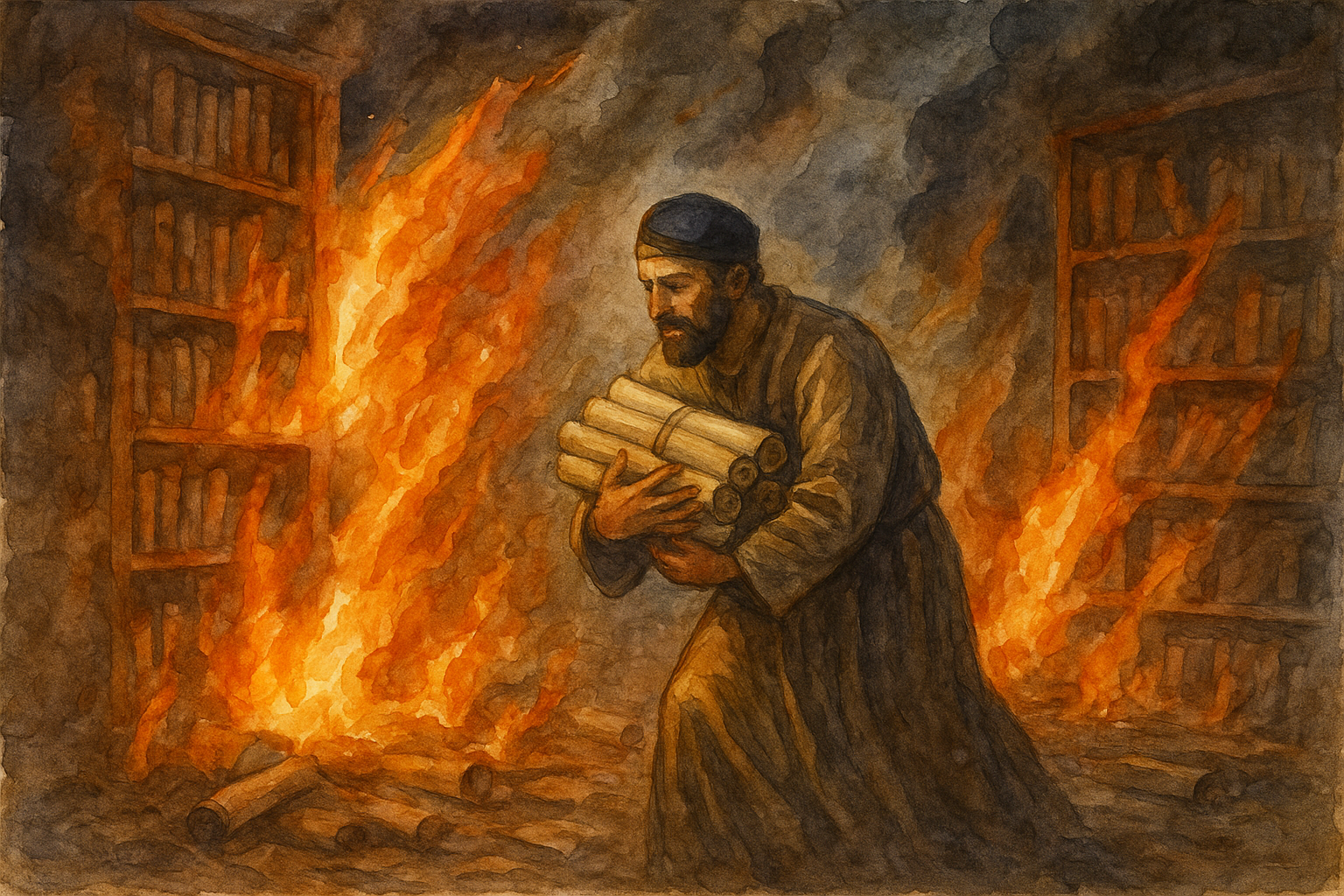Historical Context
The siege of Alexandria in 48 BCE unfolded against the larger backdrop of Roman civil war and Ptolemaic dynastic struggle. Alexandria was more than a city; it was an intellectual capital built around a Mouseion and a great library that had accumulated texts from across the Mediterranean and beyond. Scholars worked there on mathematics, astronomy, medicine, philosophy, engineering, and textual criticism. When fires from naval combat threatened the harbor and the adjacent quarters of the city, the Library and its collections suddenly faced the very real prospect of irreversible loss. As a librarian in that hour, the task before me is urgent and absolute: choose a single section of scrolls to rescue that will best preserve the capacity of future generations to rebuild and advance human knowledge.
Criteria for Prioritization
Faced with imminent destruction, choices must be guided by three practical criteria. First, foundational utility: texts that provide tools for reasoning, measurement, and reproducible technique will generate the most durable intellectual return. Second, transmissibility: manuscripts that can be copied, taught, and applied across cultures and environments increase their likelihood of long‑term survival and impact. Third, multiplier effect: works that enable advancements in other domains—agriculture, medicine, architecture, navigation, and metallurgy—should be favored because they catalyze broad societal resilience.
Decision: Mathematics and Technical Treatises
Applying those criteria, I prioritize the section of mathematics and practical technical treatises. This collection includes geometry and arithmetic, treatises on surveying and weights and measures, works on mechanics and simple machines, compilations of astronomical observations used for calendars and navigation, and engineering manuscripts that describe hydraulics, masonry, and military engines. Mathematics functions as a language for describing natural phenomena and for designing reliable instruments and structures; technical texts translate abstract principles into applied knowledge. Together they form a toolkit that future societies can use to rebuild infrastructure, cultivate reliable food systems, navigate seas, and reconstruct scientific traditions.
Immediate Rescue Strategy
Time is scarce and resources limited; therefore rescue must be strategic. First, select a representative corpus: canonical geometric works, practical arithmetic tables, surveying manuals, treatises on proportions and material strength, and concise engineering handbooks. Second, prioritize compact, high‑value scrolls that summarize methods rather than long literary expositions, because concise procedural texts are easier to copy and teach under duress. Third, organize emergency copying and diffusion: deploy scribes to make rapid transcripts, teach key apprentices who will memorize algorithms and procedures, and entrust portable copies to merchant caravans leaving the city. Fourth, ensure redundancy by hiding or dispersing copies in multiple hidden caches or with sympathetic scholars traveling to Pergamon, Rhodes, Rome, and Egyptian rural temples. Finally, establish oral transmission nodes: assemble small cohorts of teachers who can pass essential algorithms by rote to students in safe locations.
Long Term Significance
Saving mathematical and technical texts preserves not only abstract thought but practical capacity. Geometry and arithmetic enable land measurement, taxation, architecture, and the codification of building practices that prevent collapse and enable irrigation. Mechanical treatises inform the construction of mills, bridges, and ships; astronomical and calendrical knowledge underpins agriculture and navigation, fostering trade and cultural exchange. Medical practice benefits from improved measurement and instrumentation; metallurgy and civil engineering expand with applied mechanics. Crucially, mathematical methods produce a reproducible epistemic culture: procedures, proofs, and algorithms that can be taught, critiqued, and extended. Over generations, this cultural scaffolding accelerates technological recovery and innovation far more effectively than the preservation of isolated philosophical or literary treasures alone.
Ethical Reflection and Legacy
The choice to prioritize mathematics and technical treatises is not a rejection of literature, philosophy, or the humanities; those works are indispensable to civic life and moral reflection. But in a moment when the continuity of civilization itself is at stake, preserving the means to rebuild—measurement, design, and reproducible technique—offers the greatest chance that literature and philosophy can be recovered and reinterpreted by later generations. If these scrolls survive, future scholars will regain the tools to read, repair, and extend human knowledge; if they perish, the loss will be not only of specific theorems but of the very methods that allow societies to learn from experience, to plan, and to create enduring institutions.
Conclusion
As fires lick the docks and the city trembles, the emergency selection of mathematical and technical texts is a pragmatic, future‑oriented choice. It preserves the intellectual infrastructure required for recovery and innovation, maximizes transmissibility under crisis conditions, and yields multiplier effects across medicine, agriculture, engineering, and navigation. Rescuing this section is a bet on human ingenuity: that with the right tools, distant generations can reconstruct lost cultures, revive literature and philosophy, and build civilizations more resilient than the one that stands trembling now.
